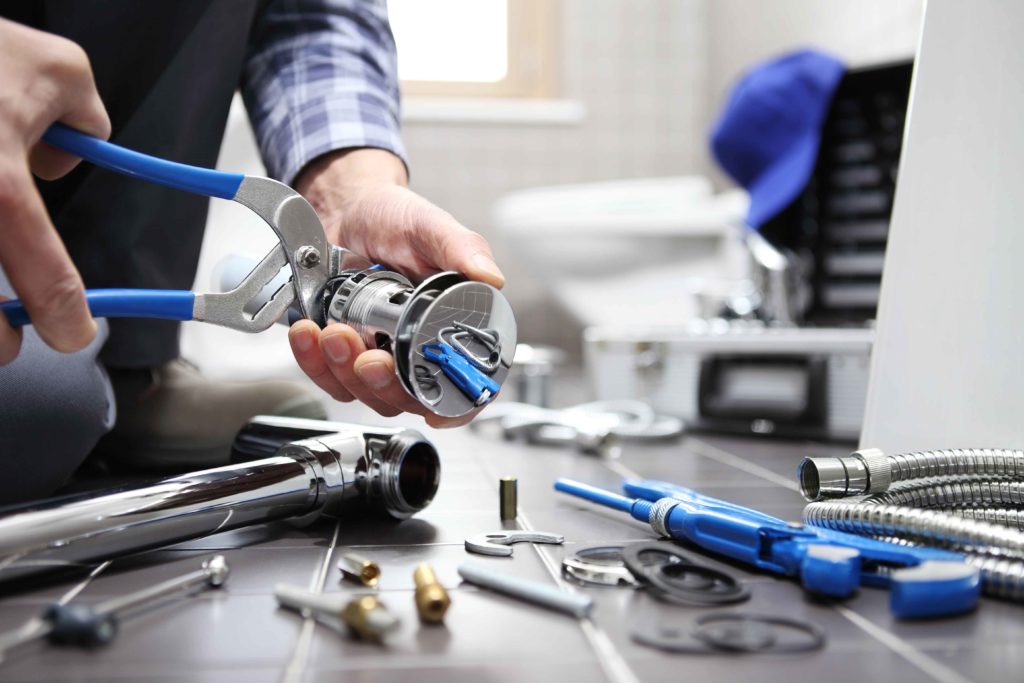Uncovering the Value of Correcting a Leaking Faucet
Uncovering the Value of Correcting a Leaking Faucet
Blog Article
We've encountered this post about Water Dripping from Faucet: Why and How to Fix down the page on the internet and believe it made perfect sense to relate it with you on this page.

Dripping taps might feel like a small aggravation, however their influence surpasses just the nuisance of the audio. From wasting water to sustaining unnecessary economic expenses and health threats, neglecting a leaking faucet can lead to different effects. In this article, we'll explore why it's vital to resolve this common home issue quickly and successfully.
Waste of Water
Ecological Effect
Leaking taps contribute dramatically to water wastefulness. According to the Environmental Protection Agency (EPA), a solitary faucet leaking at one drip per second can lose more than 3,000 gallons of water per year. This not just stress water resources yet also influences ecosystems and wildlife based on them.
Step-by-Step Guide to Fixing a Dripping Tap
Devices Required
Before trying to deal with a dripping faucet, gather the essential tools, consisting of an adjustable wrench, screwdrivers, replacement components (such as washers or cartridges), and plumber's tape.
Typical Tap Issues and Their Solutions
Determine the kind of tap and the details issue creating the drip. Common troubles include damaged washing machines, corroded valve seats, or malfunctioning O-rings. Refer to supplier guidelines or on-line tutorials for step-by-step assistance on repair work.
Financial Prices
Boosted Water Costs
Past the ecological influence, trickling taps can inflate water expenses substantially. The built up wastefulness in time converts into greater energy costs, which might have been avoided with prompt repairs.
Prospective Building Damages
In addition, extended leaking can result in damage to components and surface areas bordering the tap. Water accumulation can create discoloration, rust, and even architectural problems if left ignored, leading to extra repair costs.
Wellness Issues
Mold And Mildew and Mold Growth
The constant existence of dampness from a leaking faucet produces a perfect setting for mold and mildew growth. These fungis not only endanger indoor air high quality however also position health risks, particularly for people with breathing problems or allergies.
Waterborne Diseases
Stationary water in trickling taps can end up being a breeding ground for germs and other virus, enhancing the risk of waterborne diseases. Contaminants such as Legionella microorganisms grow in stationary water, possibly resulting in severe diseases when consumed or inhaled.
DIY vs. Specialist Repair
Benefits and drawbacks of DIY Fixing
While some might try to fix a trickling faucet themselves, do it yourself fixings feature their very own set of difficulties. Without correct knowledge and tools, DIY efforts can exacerbate the concern or bring about incomplete repair work, extending the trouble.
Benefits of Working With a Specialist Plumber
Working with a specialist plumber makes sure that the underlying root cause of the trickling faucet is dealt with properly. Plumbing technicians have the experience and devices to identify and repair tap problems successfully, conserving time and lessening the risk of further damage.
Ecological Duty
Individual Contribution to Conservation
Taking obligation for taking care of dripping taps straightens with broader efforts toward water preservation and environmental sustainability. Every person's actions jointly make a considerable impact on maintaining precious sources.
Lasting Living Practices
By prioritizing prompt repair services and taking on water-saving practices, people contribute to lasting living methods that benefit both existing and future generations.
Safety nets
Normal Maintenance Tips
To avoid leaking taps, execute routine upkeep such as cleansing aerators, evaluating for leakages, and replacing damaged parts promptly. In addition, take into consideration installing water-saving devices or upgrading to more reliable components.
Significance of Prompt Services
Resolving trickling taps as soon as they're noticed avoids further water waste and potential damage, ultimately conserving both water and money over time.
Impact on Residential Property Value
Perception of Well-Maintained Building
Preserving a home in good condition, consisting of dealing with maintenance problems like trickling faucets, boosts its regarded worth and desirability among potential purchasers or renters.
Influence on Resale Worth
Residences with well-kept plumbing fixtures, including faucets, command greater resale values in the property market. Attending to leaking taps can contribute to a favorable impact during residential or commercial property inspections and settlements.
Conclusion
Dealing with a dripping tap exceeds plain benefit; it's a necessary step towards saving water, lowering economic expenses, and securing health and building. Whether with do it yourself repair work or expert assistance, acting to deal with leaking taps is a small yet impactful way to promote responsible stewardship of resources and contribute to a much healthier, a lot more sustainable future.
How to Fix a Leaky Faucet: Step-by-Step Repair Guide
A leaky faucet may seem like a simple annoyance, but if it's not fixed promptly, that leak could cost hundreds to potentially thousands. From water damage to mold, mildew, and high water bills, even a tiny leak can be catastrophic if left unattended. Damage like this can even affect the overall value of your home, so it's important to take the right approach for leaky faucet repair. You may need the help of a plumber in some cases, but we've got a few tips you can try on how to fix a leaky faucet before calling the pros.
Four Faucet Types
When you're learning how to fix a leaky faucet, the first step is knowing what kind of faucet you're working with! There are four common types.
Cartridge Faucets
Cartridge faucets come in one- or two-handled varieties. In one-handled cartridge faucets, hot and cold water combines in a single cartridge. In the two-handled versions, hot and cold water are controlled separately and mixed in the faucet.
Ball Faucets
Ball faucets have a single lever you push up and down to adjust the pressure and rotate to change the temperature. A slotted metal ball controls the amount of water allowed into the spout.
Compression Washer Faucets
They're the oldest type of faucet, but they're still used in many homes — especially older ones. Compression faucets have two separate handles that, when turned, raise or lower the washer that seals a water valve. This valve stops water from flowing through the faucet when it is turned off.
Disc Faucets
Disc faucets rarely need to be repaired due to their maintenance-free design. The water flow is controlled by two discs — the upper one raises and lowers against a fixed lower disc, creating a watertight seal. If your disc faucet starts leaking, you may need to replace the seals or clean residue buildup from the inlets.
Fixing a Leaky Faucet
Step 1: Turn Off the Water
Whether you're learning how to fix a leaky bathtub faucet or how to fix a leaky kitchen faucet, always turn off the water supply to your working area when you're fixing a leak. The last thing you want is a flood added to your list of things to fix.
Look for the shutoff valves below your sink or around the tub and turn them clockwise to stop the water flow. If your faucet doesn't have shutoff valves, you may need to turn off the water for the whole house. Check to make sure it's off by turning the faucet on. If nothing comes out, you're ready to start the repair.
Step 2: Take Apart the Faucet
How you disassemble your faucet depends on the type of fixture you have. You can use a flathead screwdriver to remove the caps on top of the handle or handles for cartridge and compression faucets. Inside, you should see handle screws. Unscrew these with a screwdriver to remove the handle.
Disc- and ball-style faucets will typically have an inlet screw near the handle, and removing that will reveal the interior of the faucet.
Detach the Valve Stem
For cartridge- and compression-style faucets, you'll see the inner valve stem or cartridge once you remove the faucet handles. If you have a compression faucet, unscrew the brass valve stem. If you have a cartridge faucet, pull out the cartridge. If your cartridge has been in place for a while, it may require some tools or extra force to remove it due to mineral deposits.
Examine and Replace Parts
Once you've removed the parts, check them out to confirm what needs to be replaced. You may see corroded rubber washers, O-rings, stems, or cartridges. On a ball-style faucet, check the seats and springs for damage.
If you need to repair a leaky disc faucet, check the inlet and seals on the lower disc.
Once you determine what parts must be replaced, visit your local hardware store. Bring the damaged parts with you to ensure you can purchase the correct components to replace them.
Clean Valves and Faucet Cavity
If you've removed a stem or cartridge, you may notice mineral buildup in the faucet's threads. Use white vinegar to clean the valve seat by soaking it for a few minutes, then scrub it away with a soft toothbrush and rinse with warm water. You can also clean the interior of the faucet in the same way.
Reassemble the Faucet
Once your faucet is cleaned and the required parts have been replaced, it's time to reassemble it. Put the pieces back together and slowly turn the water supply back on. Doing this slowly is crucial because too much initial water pressure can damage the new hardware you've just installed.
https://homewarranty.firstam.com/blog/how-to-fix-leaky-faucet

Do you really like more info about Why Is It Important To Fix Your Leaking Tap/Faucet?? Make a remark below. We will be happy to hear your ideas about this piece. In hopes to see you back again before long. Sharing is caring. You just don't know, you may be helping someone out. Thanks for your time. Come back soon.
Report this page